#software adoption program
Explore tagged Tumblr posts
Text
To install software all you need to do is type a string of words you don't unstand to invoke super user privaledges to tell your package manager of choice that's named after a joke a programmer thought was funny (get it, it's pacman like the arcade game!). This will only have open source software that may or may not be up to date depending on how the repository is maintained. This repository does not contain any of the software that a child would want to run such as fortnite, minecraft, minecraft mods and modding tools, etc. It does contain a lot of programming and productivity software that today's computer adverse teens are all CHOMPING at the bit to use.*
This is easier then opening a web browser to Google the website of the software you want to run and clicking the big button that says download, then running the file that pops up in your browser's download feed, or simply clicking yes on the auto run diologue if your browser has that enabled.
*(Like do you realize that the sims modding tools and minecraft server jars and itch.io horror games and ai video upscalers and triple A games that people want to run aren't in those package managers? Like no shit it's gonna be more secure if it's just not capable of installing anything you want to run... Not that the operating system even has compatable binaries made for it in the first place.)

I swear to god computer people talking online about how easy computers/linux are are just that xkcd comic about experts in a field overestimating a layperson’s knowledge (“surely the average person must only know 2-3 feldspars”), over and over again. I felt this firsthand back when I was asking for advice when buying my desktop PC. When a casual computer user reads something like this, at least speaking from personal experience, it is nearly incomprehensible. It is wonderful to want to help the less technologically-fortunate, but you have to break things down more than this. You are speaking wingdings at people.
#I don't get why Linux users think that package managers are easy. Yes they're convinient if you know what you're doing and all the shit you#Want is already on them but if they were actually superior to the executable file paradigm then it would have been adopted by now#If anything package managers are closer to like the app store/ms store in that software has to be approved before it can be listed.#If that's the way you want to get software you can just do it in a graphical window with a search bar that doesn't expect you to already#Know the exact string associated with your desired program#Linux evangelist take a UX course challenge: impossible#You can't have user experience issues if you have no users right?#Sorry for ranting this just makes me so angry in a way I can't quantify#Because normally I'd actually champion Linux but like when I see someone defending something I like poorly and being an presumptuous asshole#About it at the same time it gets me more than someone being outwardly hostile y'know?
798 notes
·
View notes
Text
While I really hate the narrative of "tech bros" because of how it conflates shitty CEOs with non-shitty base-level programmers, and how it conflates Dunning-Kruger-y early adopters with people who Know Their Shit about computers...
...On the AI art issue, I will say, there is probably a legit a culture clash between people who primarily specialize in programming and people who primarily specialize in art.
Because, like, while in the experience of modern working illustrators a free commons has ended up representing a Hobbseyan experience of "a war of all against all" that's a constant threat to making a living, in software from what I can tell it's kinda been the reverse.
IE, freedom of access to shared code/information has kinda been seen as A Vital Thing wrt people's abilities to do their job at a core level. So, naturally, there's going to be some very different reactions to the morality of scraped data online.
And, it's probably the same reason that a lot of the creative commons movement came from the free software movement.
And while I agree a lot with the core principles of these movements, it's also probably unfortunately why they so often come off as tone-deaf and haven't really made that proper breakthrough wrt fighting against copyright bloat.
It also really doesn't help that, in terms of treatment by capital, for most of our lives programmers have been Mother's Special Little Boy whereas artists (especially online independent artists post '08 crash) have been treated as The Ratboy We Keep In The Basement And Throw Scraps To.
So, it make sense the latter would have resentment wrt the former...
2K notes
·
View notes
Text
Humans are weird: Prank Gone Wrong
( Please come see me on my new patreon and support me for early access to stories and personal story requests :D https://www.patreon.com/NiqhtLord Every bit helps)
“Filnar Go F%$@ Yourself!” was possibly the most disruptive software virus the universe had ever seen.
The program was designed to download itself to a computer, copy the functions of existing software before deleting said software and imitating it, then running its original programming all the while avoiding the various attempts to locate and remove it by security software.
What was strange about such a highly advanced virus was that it did not steal government secrets, nor siphon funds from banking institutions, it ignore critical infrastructure processes, and even bypassed trade markets that if altered could cause chaos on an unprecedented scale. The only thing the software seemed focused on was in locating any information regarding the “Hen’va” species, and deleting it.
First signs of the virus outbreak were recorded on the planet Yul’o IV, but once the virus began to migrate at an increasing rate and latched on to several subroutines for traveling merchant ships things rapidly spiraled out of control. Within a week the virus had infected every core world and consumed all information regarding the Hen’va. It still thankfully had not resulted in any deaths, but the sudden loss of information was beginning to cause other problems.
Hen’va citizens suddenly found that they were not listed as galactic citizens and were detained by security forces on numerous worlds. Trade routes became disrupted as Hen’va systems were now listed as uninhabited and barren leading to merchants seeking to trade elsewhere. Birth records and hospital information for millions of patients were wiped clean as they now pertained to individuals who did not exist.
Numerous software updates and purges were commenced in attempting to remove the virus. Even the galactic council’s cyber security bureau was mobilized for the effort, but if even a single strand of the virus’s code survived it was enough to rebuild itself and become even craftier with hiding itself while carrying out its programming. This was made worse by the high level of integration the various cyber systems of the galaxy had made it so the chance of systems being re-infected was always high.
After ten years every digital record of the Hen’va was erased from the wider universe. All attempts to upload copies were likewise deleted almost immediately leaving only physical records to remain untouched.
To combat this, the Hen’va for all official purposes adopted a new name; then “Ven’dari”. In the Hen’va tongue in means “The Forgotten”, which is rather ironic as the Hen’va have had to abandon everything about their previous culture to continue their existence. The virus had become a defacto component of every computer system in the galaxy and continued to erase all information related to the Hen’va. Even the translator units refused identify the Hen’va tongue and so the Ven’dari needed to create a brand new language.
It wasn’t until another fifty years had passed before the original creator of the virus stepped forward and admitted to their crime. A one “Penelope Wick”.
At the time of the programs creation Ms. Wick was a student studying on Yul’o IV to be a software designer. While attending the institution Ms. Wick stated that a fellow student, a Hen’va named “Filnar”, would hound her daily. He would denounce her presence within the school and repeatedly declared that “what are the scrapings of humans compared to the glory of the Hen’va?”
The virus was her creation as a way of getting back at the student for his constant spite. Ms. Wick was well aware of the dangers it could pose if released into the wild and so had emplaced the limitation that the virus would only infect computers on site with the campus. The schools network was setup that students could only work on their projects within the confines of the institution to ensure they did not cheat and have others make them instead. What she had not counted on was this rule only applied to students and not teachers. So when a teacher brought home several student projects to review and then sharing those infected files with their personal computer, the virus then gained free access to the wider planets networks.
When the Ven’dari learned of this there were several hundred calls for Ms. Wick to be held accountable for her actions, and nearly twice as many made to take her head by less patient individuals who had seen their entire culture erased. Much to their dismay Ms. Wick died shortly after her confession from a long term disease that had ravaged her body for several years.
Much to her delight, she had achieved her goals of removing the source of her mockery.
#humans are insane#humans are weird#humans are space oddities#humans are space orcs#story#scifi#writing#original writing#niqhtlord01#funny#prank#prank gone wrong#virus
370 notes
·
View notes
Note
Hello! First, I wanted to say thank you for your post about updating software and such. I really appreciated your perspective as someone with ADHD. The way you described your experiences with software frustration was IDENTICAL to my experience, so your post made a lot of sense to me.
Second, (and I hope my question isn't bothering you lol) would you mind explaining why it's important to update/adopt the new software? Like, why isn't there an option that doesn't involve constantly adopting new things? I understand why they'd need to fix stuff like functional bugs/make it compatible with new tech, but is it really necessary to change the user side of things as well?
Sorry if those are stupid questions or they're A Lot for a tumblr rando to ask, I'd just really like to understand because I think it would make it easier to get myself to adopt new stuff if I understand why it's necessary, and the other folks I know that know about computers don't really seem to understand the experience.
Thank you so much again for sharing your wisdom!!
A huge part of it is changing technologies and changing norms; I brought up Windows 8 in that other post and Win8 is a *great* example of user experience changing to match hardware, just in a situation that was an enormous mismatch with the market.
Win8's much-beloathed tiles came about because Microsoft seemed to be anticipating a massive pivot to tablet PCs in nearly all applications. The welcome screen was designed to be friendly to people who were using handheld touchscreens who could tap through various options, and it was meant to require more scrolling and less use of a keyboard.
But most people who the operating system went out to *didn't* have touchscreen tablets or laptops, they had a desktop computer with a mouse and a keyboard.
When that was released, it was Microsoft attempting to keep up with (or anticipate) market trends - they wanted something that was like "the iPad for Microsoft" so Windows 8 was meant to go with Microsoft Surface tablets.
We spent the first month of Win8's launch making it look like Windows 7 for our customers.
You can see the same thing with the centered taskbar on Windows 11; that's very clearly supposed to mimic the dock on apple computers (only you can't pin it anywhere but the bottom of the screen, which sucks).
Some of the visual changes are just trends and various companies trying to keep up with one another.
With software like Adobe I think it's probably based on customer data. The tool layout and the menu dropdowns are likely based on what people are actually looking for, and change based on what other tools people are using. That's likely true for most programs you use - the menu bar at the top of the screen in Word is populated with the options that people use the most; if a function you used to click on all the time is now buried, there's a possibility that people use it less these days for any number of reasons. (I'm currently being driven mildly insane by Teams moving the "attach file" button under a "more" menu instead of as an icon next to the "send message" button, and what this tells me is either that more users are putting emojis in their messages than attachments, or microsoft WANTS people to put more emojis than messages in their attachments).
But focusing on the operating system, since that's the big one:
The thing about OSs is that you interact with them so frequently that any little change seems massive and you get REALLY frustrated when you have to deal with that, but version-to-version most OSs don't change all that much visually and they also don't get released all that frequently. I've been working with windows machines for twelve years and in that time the only OSs that Microsoft has released were 8, 10, and 11. That's only about one OS every four years, which just is not that many. There was a big visual change in the interface between 7 and 8 (and 8 and 8.1, which is more of a 'panicked backing away' than a full release), but otherwise, realistically, Windows 11 still looks a lot like XP.
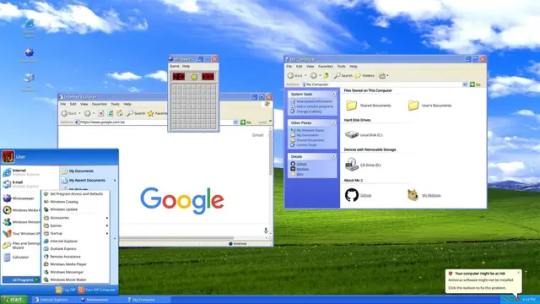

The second one is a screenshot of my actual computer. The only change I've made to the display is to pin the taskbar to the left side instead of keeping it centered and to fuck around a bit with the colors in the display customization. I haven't added any plugins or tools to get it to look different.
This is actually a pretty good demonstration of things changing based on user behavior too - XP didn't come with a search field in the task bar or the start menu, but later versions of Windows OSs did, because users had gotten used to searching things more in their phones and browsers, so then they learned to search things on their computers.
There are definitely nefarious reasons that software manufacturers change their interfaces. Microsoft has included ads in home versions of their OS and pushed searches through the Microsoft store since Windows 10, as one example. That's shitty and I think it's worthwhile to find the time to shut that down (and to kill various assistants and background tools and stop a lot of stuff that runs at startup).
But if you didn't have any changes, you wouldn't have any changes. I think it's handy to have a search field in the taskbar. I find "settings" (which is newer than control panel) easier to navigate than "control panel." Some of the stuff that got added over time is *good* from a user perspective - you can see that there's a little stopwatch pinned at the bottom of my screen; that's a tool I use daily that wasn't included in previous versions of the OS. I'm glad it got added, even if I'm kind of bummed that my Windows OS doesn't come with Spider Solitaire anymore.
One thing that's helpful to think about when considering software is that nobody *wants* to make clunky, unusable software. People want their software to run well, with few problems, and they want users to like it so that they don't call corporate and kick up a fuss.
When you see these kinds of changes to the user experience, it often reflects something that *you* may not want, but that is desirable to a *LOT* of other people. The primary example I can think of here is trackpad scrolling direction; at some point it became common for trackpads to scroll in the opposite direction that they used to; now the default direction is the one that feels wrong to me, because I grew up scrolling with a mouse, not a screen. People who grew up scrolling on a screen seem to feel that the new direction is a lot more intuitive, so it's the default. Thankfully, that's a setting that's easy to change, so it's a change that I make every time I come across it, but the change was made for a sensible reason, even if that reason was opaque to me at the time I stumbled across it and continues to irritate me to this day.
I don't know. I don't want to defend Windows all that much here because I fucking hate Microsoft and definitely prefer using Linux when I'm not at work or using programs that I don't have on Linux. But the thing is that you'll see changes with Linux releases as well.
I wouldn't mind finding a tool that made my desktop look 100% like Windows 95, that would be fun. But we'd probably all be really frustrated if there hadn't been any interface improvements changes since MS-DOS (and people have DEFINITELY been complaining about UX changes at least since then).
Like, I talk about this in terms of backward compatibility sometimes. A lot of people are frustrated that their old computers can't run new software well, and that new computers use so many resources. But the flipside of that is that pretty much nobody wants mobile internet to work the way that it did in 2004 or computers to act the way they did in 1984.
Like. People don't think about it much these days but the "windows" of the Windows Operating system represented a massive change to how people interacted with their computers that plenty of people hated and found unintuitive.
(also take some time to think about the little changes that have happened that you've appreciated or maybe didn't even notice. I used to hate the squiggly line under misspelled words but now I see the utility. Predictive text seems like new technology to me but it's really handy for a lot of people. Right clicking is a UX innovation. Sometimes you have to take the centered task bar in exchange for the built-in timer deck; sometimes you have to lose color-coded files in exchange for a right click.)
296 notes
·
View notes
Text
My wife was asking me about this this morning. This is pure political fanfic, but if I were Trump and I were going to try and make America a re-industrialised nation centred around the tech industry that keeps its supply lines as entirely in-house as possible, what I would do is start (obviously) with enormous central planning. You can't "free market incentives" your way back out of the export of industrial labour overseas.
You'd copy China and make enormous State-Owned Enterprises (assuming we care about the market and want to keep playing this stupid game instead of just becoming fully communist) that would process refined minerals into components, components into parts and parts into electronics. I'd recognise the scale of this as a multi-generational project and immediately start subsidising training for more engineers, especially for people who can set up automated factory lines but also engineers in new emerging tech fields like autonomous driving, software programmers, designers, even artists since the content economy is such a huge part of what people use tech for through social media and so much art is produced digitally now anyway.
From there you want to look at the markets globally that fucking, EaglePhone or whatever these overpriced Made In Murica devices can be sold into, and at this point, given that they will be crazy expensive compared to Chinese electronics literally no matter what you do, here would be a worthwhile place to try and flex America's muscles and threaten the UK, the EU, South America, Canada and so on with tariffs or other penalties if they don't adopt a hostile policy toward Chinese electronics.
Massive central planning would be essential for the kind of societal transformation that Trump is explicitly describing, in order to have a product to sell to the rest of the world before using imperialist bullying to make other countries buy things from America instead, but here we have to return yet again to the reality of Trump's plan. There is no end goal where America is in a stronger position. If he had implemented sweeping public programs reinvesting taxes into the health of the nation (never mind the health of its citizens) in his first term, he might have been in a powerful enough position to strongarm other countries into changing the flows of global trade, but America's world influence simply is declining, and more and more rapidly, so he's just trying to make moves that make him and his friends as much money as possible while they lock the doors, pack the country up into the box it came in and set the whole thing on fire. He describes these moves using the MAGA fantasy because it gives all his supporters in the media and the general population enough to talk about to buy him time, but I don't think anyone outside his base ever thought making America great was ever his plan, so why has everyone been critiquing the tariffs as if his sincere belief was that he would achieve his stated goals with them?
We all let our enemies set the topic of the conversation all day every day and it's shocking to me
49 notes
·
View notes
Text
Numbers l Chapter Four

Pairing: Spencer Reid x Disabled OC
Content Warning: Talk of disability, stalking, light cussing
Word Count: 1.6k
Summary: Brooke already feels the effects of the work she'll be surrounded by.
Taglist: @ihatethecrowdsyouknowthat @just-call-me-by-yn @slowdownpal
A/n: Sorry it took a minute to get this chapter out! Life got a little busy. Also the banner sucks because it's my first attempt at making one 😭
Story:
Coffee wafted up my nose from the cup resting on my wheelchair tray. Penelope and I had the opportunity to take a break as Spencer and the rest of the team worked with the information we gathered for them so far. That was the nice thing about just being a technical analyst, once we followed our orders, we could let them handle the rest of the horrors.
Currently, Spencer was using Penelope’s- well, I guess now it’s our office, to come up with a geographical profile. He explained once they figured out where the unsub carries out his plans, they’d be making huge strides in the case. So now, a huge map was hanging up on the one wall that didn’t have a computer monitor, or software tower. Penelope suggested she and I get a cup of coffee while he works.
“So, Newbie, tell me everything I should know about you” She requests while leaning back against the break area counter with a beaming smile “Your hopes, your dreams, cute quirks, I want to know everything.”
My eyes grow wide, a little stunned by her boldness. Although I really shouldn’t be surprised, this girl adopted me within the first five minutes of knowing each other, and I can’t help but kind of love it. I let out a small awkward laugh “Well…” My voice trails off as I think “I grew up in Florida which is where my family still is.”
Besides getting a new job, moving hours away from my parents, aka, my soul caregivers was a big deal. Honestly from an early age I thought it wasn’t in the cards. I can’t bathe myself, let alone live on my own. I applied for this job in secret, knowing my mother would have a nervous breakdown over the idea of me moving out. I figured if I didn’t get the job, she wouldn’t have to know and I could save her the anxiety.
I did get the job though, which meant having to have a very nerve-racking conversation at the dining room table. You could say my mother wasn’t exactly thrilled when she found out I went behind her back, but my dad was there to be the level-headed one. He had the habit of being the rational one mediating between my mother and I. He used to say we butt heads just because she and I are so similar. I appreciated his positive outlook on things, but from my point of view, she had the tendency to suffocate me with her protection. Deep down I know she just wants what she feels like is best. It could be worse, she could just not care at all. That thought keeps me at bay for the most part.
After the dust settled, my parents helped me find an accessible apartment and a reliable caregiving program. “If I can’t be there with you, I’m gonna make damn sure whoever takes care of you knows what they’re doing.” Is what my mother said as we scrolled through different agencies.
“Florida!” Penelope gasped then frowned, her voice full of empathy “You must miss your folks with them living so far away.”
I smile softly with a sheepish shrug. “I mean, yeah- of course, I miss them at times but I feel like I needed the independence.” Penelope probably didn’t understand how literal I meant that, I didn’t want to unpack the trapped feeling of being stuck needing help with most daily things. The poor girl wasn’t my therapist.
Penelope smiled and nodded “Well good for you girl.”
My eyes flicker down to my cup of coffee. When I asked for one, I didn’t think it through all the way. The only way I’d be able to actually sip it is if someone held up the cup for me and I didn’t exactly want to turn my new coworkers into caregivers, so I just let the beverage get cold.
Suddenly I see Spencer come speed walking down the hall towards us with the giant map in hand.
“Uh oh… I think Wonder Boy stumbled upon something.” Penelope says before following him in suit over to the desks.
I quickly followed but made sure to keep my coffee steady so we didn’t have a mess on our hands.
Spencer moves items out of the way with the help of Penelope before laying the map out “I already called Hotch, but look at this…” He starts before connecting the dots on the map with a red marker “After looking at each woman’s residential location, I discovered something….” After a few more lines and curves, Spencer stands up straight and snaps the cap back on the marker “If you connect all of them, they outline an eardrum.”
My eyebrows pinch together as I look closely at the map. He was right. It’s not like I knew exactly what an eardrum looked like, but the drawing looked like something out of a human anatomy textbook. “What the hell…?” I whisper under my breath.
Penelope looked back and forth between the map and Spencer, horrified “What on earth could that possibly mean?”
Spencer sighs while looking back down at his own drawing “It means this unsub is more calculated and smart than we thought. Also it tells us the ear is somehow important for their fantasy, or compulsion.” He rolls up the map, avoiding our gaze “It also tells us they’ve been watching these women.”
That thought made a cold shiver run down my spine. It’s terrifying to think even when you feel like you’re safe in your own home, you’re not. Definitely making sure my door is locked tonight. I was already nervous living in a new town, and this didn’t help.
“Hotch suggested we pack it up here tonight.” Spencer explained, “He said they’ll work throughout the night on their end, and I think I might as well.”
Penelope and I nodded, both looking a little bit like we just saw a ghost.
Penelope was the first one to say “Ok, um… I’m going to go get my stuff.”
That left Spencer and I sitting in silence. He was busy making sure the map was rolled up nice and tight with edges lined up. I was busy in my head thinking about the trip to the bus stop I’m gonna have to take in the dark, now with the fear of potentially being watched. Not only was I a female, but I was a female who literally couldn’t fight back. If an unsub like this one was around, I’d be a perfect target. An unsub could easily disable my wheelchair somehow and just like that, I’d be at their mercy. Cool, first day at my dream job, and I’m probably already going to have nightmares.
“Are you ok?”
I jump a little and snap out of it to see Spencer looking at me with slight concern in his eyes. In the 30 seconds of me irrationally thinking of the worst case scenario, he pulled up a chair and began looking through the case file again.
“I-” I didn’t know what to say. I didn’t want him to think I was scared to go home where I didn’t have copious amounts of security besides a chain lock. After a few blinks, I end up giving him my best fake smile and shrug him off “O-Oh yeah, I was just thinking of what I should have for dinner tonight.” Note to self, if you ever commit a crime, don’t get caught because you suck at lying.
Spencer’s eyebrows narrow “Are you sure?” His face softens “You know, speakers who usually do not stutter may experience problems with fluency when they are nervous or feel pressured. Also when they lie.”
Just like that, my pea-sized brain was shown up by the genius. I let out the breath I was apparently holding and let out a subtle nervous giggle “I guess I’m a little nervous heading home in the dark.”
He looked at me confused again, more concerned this time “You’re not walking all the way home, are you?”
That’s when I let out a genuine laugh and shook my head “Just to the bus stop. It’s cheaper than an accessible cab.”
“Oooh…” He replied with raised eyebrows and nodded slowly, almost as if he was thinking of something. He leans back in his seat before looking at me again “Penelope could walk with you until you’re safely on the bus.”
“I hear myself being summoned.” Out of nowhere, Penelope returned with her familiar smile glowing on her face like it wasn’t wiped away less than five minutes ago. Her jacket and purse were just as colorful as the rest of her attire.
“Could you walk Brooke to the bus stop?” Spencer asked before I even had the chance to open my mouth. His tone felt oddly protective, like he didn’t care what my answer would be, he was going to make sure I felt comfortable about going home.
Normally I would be pissed about having the choice being taken away from me, but it was hard not to appreciate the gesture.
Penelope didn’t hesitate to quickly nod, then looked down at me and playfully nudged my shoulder. “You could have just asked, newbie, let’s go get your stuff.” With that, she spins around and starts heading towards our office.
I giggle softly then mouth to Spencer “Thank you.”
Before I turned around to follow the click-clack of yellow heels, I caught Spencer smiling softly and mouthing back “You’re welcome.” His smile was warm, comforting even.
This job came with horrors, but maybe seeing these people every day along with saving others, will make it all worth it.
#criminal minds#spencer reid#fangirl#mgg#mathew gray gubler#spencer#reid#fiction#fanfiction#fanfic#spencer reid fanfiction#spencer reid x oc#spencer reid x disabled oc#fanfic writer#writers on tumblr#writers#writing#penelope garcia
29 notes
·
View notes
Text
Anne Kustritz’s Identity, Community, and Sexuality in Slash Fan Fiction
Anne Kustritz’s new book, Identity, Community, and Sexuality in Slash Fan Fiction: Pocket Publics has just been released by Routledge (2024). You might know Kustritz, a scholar of fan cultures and transmedia storytelling, from her early essay “Slashing the Romance Narrative,” in the Journal of American Culture (2003) or maybe from some of her more recent work on transmedia and serial storytelling. But this new book is an exciting addition to the fan studies canon, and Fanhackers readers might be particularly interested, because the book “explores slash fan fiction communities during the pivotal years of the late 1990s and the early 2000s as the practice transitioned from print to digital circulation,”--which is the era that a lot of the fans involved in the creation of the OTW came from. As I noted in my book blurb, “While there has been an explosion of fan studies scholarship in the last two decades, we haven't had an ethnography of fan fiction communities since the early 1990s. Kustritz's Pocket Publics rectifies that, documenting the generation of slash fans who built much of fandom's infrastructure and many of its community spaces, both on and off the internet. This generation has had an outsized impact on contemporary fan cultures, and Kustritz shows how these fans created an alternative and subcultural public sphere: a world of their own.”
Kustritz doesn’t just analyze and contextualize fandom, she also describes her own experiences as a participant-observer, and these might resonate with a lot of fans (especially Fanhackers-reading fans!) Early on in the book, Kustritz describes her how her own early interest in fandom blurred between the personal and the academic:
Because I began studying slash only a year after discovering fandom on-line, my interest has always been an intricate tangle of pleasure in the texts themselves, connection to brilliantly creative women, and fascination with intersections between fan activities and academic theory. I may now disclaim my academic identity as an interdisciplinary scholar with concentrations in media anthropology and cultural studies and begin to pinpoint my fan identity as a bifictional multifandom media fan; however, I only gradually became aware of and personally invested in these categories as I grew into them. This section defines the scope of the online observation period that preceded the active interview phase of this research. In so doing it also examines the messy interconnections between my academic and fannish interests and identities. Trying to pick apart what portion of my choices derived from fannish pleasure and which from academic interest helps to identify the basic internal tensions and categories that slash fan fiction communities relied upon to define themselves, the pressures exerted upon these systems by the digital migration, and complications in academic translation of fannish social structures.
Later in the book, Kustritz discusses how fans have organized and advocated for themselves as a public; in particular, there’s a fascinating chapter about the ways in which fandom has adopted and transformed the figure of the pirate to forge new ways of thinking about copyright and authorship. If the OTW was formed to argue that making fanworks is a legitimate activity, the figure of the pirate signifies a protest against the law and a refusal to be shamed by it:
[F]ans also use the figure of the pirate to make arguments that validate some fan activities and consign others to illegitimacy. At the urging of several friends involved with slash, I attended my first non-slash focused science fiction and fantasy convention in the summer of 2004. The program schedule announced a Sunday morning panel discussion provocatively titled “Avast, Matey: The Ethics of Pirating Movies, Music, and Software” with the subheading “Computers today can distribute [more] intellectual property than ever before--not always legally. Is it ever okay to copy, download, and/or distribute media? Sorry, ladies, none of us will be dressed as Captain Jack Sparrow.” The panel’s subheading, which obliquely warned away both lusty women and pirates, led a small contingent of slash fans to shake off Saturday night’s convention revelries unreasonably early and implement a plan of their own for Sunday’s panel. As many fan conventions encourage costumes, known as “cosplay,” one of my friends and research participants happened to have been dressed as Captain Jack Sparrow of Pirates of the Caribbean that weekend, so I entered the piracy panel with Captain Jack and a motley crew of slashers, some of them intent upon commandeering the discussion.
The clash that followed exemplifies a structural fault line between various types of fan communities regarding their shared norms and beliefs about copyright law, the relationship between fans and producers, and appropriate fan behavior.
If you want to find out how this clash played out–well, you’ll just have to read the book. 😀
–Francesca Coppa, Fanhackers volunteer
#fanhackers#author:francescacoppa#anne kustritz#early digital fandom#slash#piracy#fannish culture clashes
127 notes
·
View notes
Text
Twisted Love, by Ana Huang 📷
“I never claimed to be Prince Charming, and my love isn’t a fairy-tale type of love. I’m a fucked-up person with fucked-up morals. I won’t write you poems or serenade you beneath the moonlight. But you are the only woman I have eyes for."

I was so close to DNF'ing this, and honestly, I hate-read my way to the end. It's a shame really, because I feel like Huang isn't a bad writer per se, but her characters are completely intolerable (to me) and she needed to make better choices about what was included in this book.
Firstly, this book has every trope you could possibly imagine and I am not exaggerating. This is every wattpad story ever written crammed into one (too long tbh) book. Brother's best friend, grumpy-sunshine, billionaire CEO who doesn't like anyone else, crazy ex-boyfriend, one bed, family members out for your money, family members who wanted to kill you, oh shit actually you're adopted—everything. EVERYTHING. It's too much.
And even if we put that aside...let's move onto the characters.
Ava: the girl with so much trauma she has night terrors and a mysterious past she can't remember, whose father acts like he hates her, whose ex stalks and manhandles her, and oh yeah, she's SO nice and SO happy and just the BEST PERSON EVER all the fucking time, because none of that affected her. At all. ✔️ Check.
Alex: What isn't Alex Volkov? No seriously, what can't he do? And that's not a compliment.
He drove the same way he walked, talked, and breathed—steady and controlled, with an undercurrent of danger warning those foolish enough to contemplate crossing him that doing so would be their death sentence.
Alex’s parents had died when he was young and left him a pile of money he’d quadrupled the value of when he came into his inheritance at age eighteen. Not that he’d needed it, because he’d invented a new financial modeling software in high school that made him a multimillionaire before he could vote. With an IQ of 160, Alex Volkov was a genius, or close to it. He was the only person in Thayer’s history to complete its five-year joint undergrad/ MBA program in three years, and at age twenty-six, he was the COO of one of the most successful real estate development companies in the country. He was a legend, and he knew it.
“I’m not bragging. I have hyperthymesia, or HSAM. Highly superior autobiographical memory. Look it up.”
Stop. Please, I'm begging you.
And if you thought that might have just been her thoughts about him, well...
I didn’t do sweet nothings or lovemaking. I fucked a certain way, and only a specific type of woman was into that shit. Not hard-core BDSM, but not soft. No kissing, no face-to-face contact. Women agreed, then tried to change it up halfway through, after which I’d stop and show them the door.
You like to take a woman from behind and throw in some dirty talk and degradation babe, it's really not that deep 🥴
It's giving ✨i'm not like other guys✨
So anyway after we filter through at least 3178920 predictable plots and sideplots and just sideways journeys that didn't really need to be in here, finally we get to a third-act breakup (his choice) after which he decides he doesn't like (his choice) and decides to stalk her. For over a year.
“I’ll file a restraining order against you. Have you arrested for stalking.” “You can try, but I can’t guarantee my friends in the British government will comply.” His face darkened. “And if you think I’m leaving you alone and unprotected anywhere, you don’t know me at all.”
Ummm bro, the only danger to her here is you, are you kidding me? And sunny old Ava who was literally stalked by her last boyfriend (and it was a whole damn plot point) is like you know what, I love this guy who's stalking me! I'll give him another chance! Sure!
But wait, wait, wait, only after he serenades her with a love song. I'm not kidding. Oh, and you guessed it—voice of an angel, because there's nothing Alex Volkov can't do.
Personally I feel like ten years have passed since I picked up this book yesterday and some chick was stranded in the rain on the side of the road.
Also, minus ten points for
thick, and hard as a steel pipe—

Just...no. Just no.
I'd love to have something more positive to say but I really don't have anything. The side characters were more tolerable than the main characters and that's the only reason I'm wondering if I should subject myself to the next book in the series, but honestly? I really don't think I can. I wish I'd picked up one of the fanfics on my TBR instead 😶
32 notes
·
View notes
Text





Apple II (June 1977)
The original Apple II was one of the first highly successful personal computers, released by Apple Computer, Inc. (now Apple Inc.) in 1977. It was designed by Steve Wozniak, while Steve Jobs handled the business strategy. The Apple II played a pivotal role in launching the personal computing revolution.
Key Features:
Release Year: 1977
Processor: MOS Technology 6502 at 1 MHz
RAM: 4 KB, expandable up to 48 KB
Storage: Initially used cassette tapes; later supported 5.25" floppy disks (Disk II)
Graphics: Color graphics support — one of the first home computers to offer it
Display: 24 lines × 40 characters text or low-res color graphics (40×48 pixels, 16 colors)
Keyboard: Built-in QWERTY keyboard (initially no lowercase support)
Expansion: 8 internal slots for add-on cards (e.g., sound, memory, network)
Innovations and Impact:
One of the first PCs sold fully assembled in a case with a keyboard and video output — no need for DIY assembly.
Its color graphics and sound capabilities made it popular for games and multimedia software.
Widely adopted in U.S. schools during the 1980s for educational purposes.
Supported BASIC programming, business software, and early video games.
Legacy: The Apple II series (including the II Plus, IIe, IIc, and IIGS) remained in production into the early 1990s. Its commercial success was crucial for Apple's growth and helped pave the way for the Macintosh.
The Apple II is still considered a milestone in computing history, and it is admired for its innovation, accessibility, and influence on the PC industry.
#apple#apple ii#retro computing#retrocomputing#retro gaming#retrogaming#steve jobs#steve wozniak#mos 6502#computer#vintage computer#technology#tech#retro tech#vintage computing#computer history
19 notes
·
View notes
Text
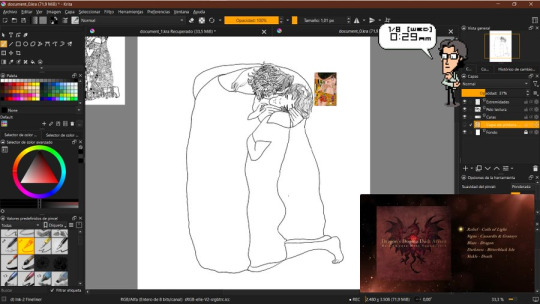


Yesterday, I don't exactly remember how or why, but I felt motivated to create my own version of The Kiss by Gustav Klimt. Honestly, I came across so many versions before making mine that perhaps that's one of the reasons why my motivation lasted as long as it did XD.
It was challenging to mentally prepare myself to replicate the positioning of Gustav's faces. It was a real struggle trying to figure out how Hal's glasses would behave in that position, and even though I used the BJD as a reference, I couldn’t quite translate it "successfully" into the drawing… I still don’t know how to draw glasses, sorry.
Lina’s face was tricky because I found that the original reference had a longer face than hers, so I had to make adjustments.
Now, I’m super happy with what I created (which is rare), and I want to explain some of the choices I made *smiles*. This drawing was made using bases and references in Krita.
Hal:
His clothing is a photograph of a motherboard that I pixelated in certain areas and stained with a watercolor texture brush. Then I duplicated the layer and saturated it to give it the orange tone but still preserving the green. I also used a square texture pencil, imitating the decorations in the original painting, and finally applied an oil painting filter. (I also did this on Lina’s dress and the layer with the oranges.)
Lina’s dress, the cape, and the cosmos
These elements follow similar processes. I drew the hair textures for both Hal and Lina myself. The stars, grass, and flowers in Hal’s hair are brushes. The sunflower and roses are PNGs, and the background texture is another photograph.
Symbolism
Hal’s tunic: The motherboard is obvious. The orange color seems to take over the green of the motherboard, symbolizing Lina’s presence in his life.
The grass: It’s filled with blue roses, representing Snake. (I’ll always make this representation because I adore Snake, and even though I ship Hal with Lina, Snake will always be present near Hal.)
Hal’s head: It features daisies, which could also be interpreted as sunflowers, referencing the two women in his life. These are on his head because they are his biggest concern. The large Sunflower on the ground represents Sunny, pixelated because she also knows programming.
The orange cape: Inside the cape is the cosmos, an important symbol for my fic. Hal’s parents met at NASA, and one of my big headcanons about Strangelove and Hal is that she would have taught Hal to observe the night sky at an early age (inspiring his interest in extraterrestrial theories, as mentioned in the MGS2 codec, even if it was a joke). The image of the starry sky is also linked to Lina through her birthmark, a characteristic that is both positive and negative in the story and one of the traits she shares with me. For this reason, it’s near her (and also have stars over her hair) ("It was as if the cosmos had marked you to show you were the one.")
Lina’s dress: It features daisies ("Margarita" in Spanish, my IRL name), which are summer flowers that bloom in June, my birth month and my Hal’s fan birthday. These are pixelated, symbolizing Hal’s presence in Lina’s life and her career as a programmer. Daisies represent purity and true love, and they had medicinal properties.
Oranges on the cape: The oranges symbolize food, tied to Lina’s role as a chef, her work/facade she initially adopts to hide from the antagonist. They also symbolize fertility, virtue, fidelity, optimism, energy, and creativity. Additionally, in color psychology, the color stimulate appetite. (And that's a fact as food, because they activate the gastric juice)
At Lina’s feet: There’s a neural programming network, reminding us that she is an AI programmer. The same function is carried out by the code above it.
This also serves to highlight a little, yet significant, detail: Hal is an engineer, skilled in both hardware and software, capable of building a Metal Gear (like Huey); while Lina is a programmer, AI developer (like Strangelove) who is obsessed with response times.
#original character#otacon#oc x canon#lina shirou#halina#mgs fanfic#the emmerich's curse#theemmerichscurse#halemmerich#hal emmerich
15 notes
·
View notes
Text
Why don't cars have a dash board warning light alerting you when a taillight or headlight is out? You normally don't know until you get pulled over by a cop. Even if you check them before each trip they sometimes burn out while on the trip.
The absence of universal dashboard warnings for burnt-out exterior lights (headlights, taillights, etc.) is a mix of cost, design priorities, and technological limitations—but solutions exist. Here’s why most cars lack this feature and what drivers can do:
Why Most Cars Don’t Warn You Cost-Cutting by Manufacturers:
Adding a monitoring system for every bulb requires additional wiring, sensors, and software, which automakers often omit to keep prices low, especially in budget vehicles.
Example: A $20 circuit to detect bulb failures adds up to millions in production costs across a car model’s lifespan. Simpler Electrical Systems:
Older cars use basic circuits where a burnt bulb doesn’t disrupt the electrical flow (unlike a blown fuse). Modern CAN bus systems can detect failures but aren’t always programmed to alert drivers. Assumption of Manual Checks:
Manufacturers assume drivers will notice via:
Reflections (e.g., light bouncing off garage walls).
Dashboard icons for specific systems (e.g., brake light warnings tied to the brake pedal circuit). Regulatory Gaps:
The U.S. doesn’t mandate bulb-out warnings, though the EU requires rear light failure alerts in newer cars (via ECE Regulation 48).
Cars That Do Have Warnings Luxury/Modern Vehicles: Brands like BMW, Mercedes, and Tesla include bulb monitoring systems in higher trims.
LED Lighting: Many EVs and hybrids with full LED setups (e.g., Ford Mustang Mach-E) self-diagnose faults since LEDs rarely fail abruptly.
Aftermarket Kits: Products like LightGuardian (50–100) plug into taillight circuits and trigger an alarm if a bulb dies.
Why Bulbs Burn Out Mid-Trip Halogen Bulbs: Prone to sudden failure due to filament vibration or temperature swings.
Voltage Spikes: Poor alternator regulation can surge power, killing bulbs.
Moisture/Corrosion: Water ingress in housings causes shorts over time.
Practical Solutions for Drivers Retrofit Your Car:
Install LED bulbs with built-in failure alerts (e.g., Philips X-tremeUltinon).
Use Bluetooth-enabled bulb holders (e.g., Lumilinks) that notify your phone. Routine Checks:
Nightly Reflection Test: Park facing a wall and check light patterns.
Monthly Buddy Check: Have someone press brakes/turn signals while you inspect. Legal Workarounds:
In regions requiring annual inspections (e.g., EU, Japan), mechanics flag dead bulbs.
Use dual-filament bulbs for redundancy (e.g., a brake light that still works as a taillight if one filament fails).
Why It’s Likely to Improve LED Adoption: Longer-lasting LEDs (25,000+ hours) reduce failure rates.
Smart Lighting: New cars with matrix LED or laser lights often self-diagnose.
Consumer Demand: Aftermarket alerts (e.g., $30 Wireless Car Light Monitor) are gaining traction.
Bottom Line
While universal bulb-out warnings aren’t standard yet, technology and regulations are catching up. Until then, proactive checks and affordable aftermarket gadgets can save you from a traffic stop. 🔧💡
Pro tip: If your car has automatic headlights, toggle them to “off” occasionally to manually check all lights in a reflection.

#led lights#car lights#led car light#youtube#led auto light#led headlights#led light#led headlight bulbs#ledlighting#young artist#led light bulbs#car culture#race cars#classic cars#car#cars#cartoon#suv#porsche#truck#carlos sainz#supercar#automobile#headlight bulb#headlamps#headlamp#headlight#aftermarket new lamp#car lamp#lamp
7 notes
·
View notes
Text
Weaponizing violence. With alarming regularity, the nation continues to be subjected to spates of violence that terrorizes the public, destabilizes the country’s ecosystem, and gives the government greater justifications to crack down, lock down, and institute even more authoritarian policies for the so-called sake of national security without many objections from the citizenry.
Weaponizing surveillance, pre-crime and pre-thought campaigns. Surveillance, digital stalking and the data mining of the American people add up to a society in which there’s little room for indiscretions, imperfections, or acts of independence. When the government sees all and knows all and has an abundance of laws to render even the most seemingly upstanding citizen a criminal and lawbreaker, then the old adage that you’ve got nothing to worry about if you’ve got nothing to hide no longer applies. Add pre-crime programs into the mix with government agencies and corporations working in tandem to determine who is a potential danger and spin a sticky spider-web of threat assessments, behavioral sensing warnings, flagged “words,” and “suspicious” activity reports using automated eyes and ears, social media, behavior sensing software, and citizen spies, and you having the makings for a perfect dystopian nightmare. The government’s war on crime has now veered into the realm of social media and technological entrapment, with government agents adopting fake social media identities and AI-created profile pictures in order to surveil, target and capture potential suspects.
Weaponizing digital currencies, social media scores and censorship. Tech giants, working with the government, have been meting out their own version of social justice by way of digital tyranny and corporate censorship, muzzling whomever they want, whenever they want, on whatever pretext they want in the absence of any real due process, review or appeal. Unfortunately, digital censorship is just the beginning. Digital currencies (which can be used as “a tool for government surveillance of citizens and control over their financial transactions”), combined with social media scores and surveillance capitalism create a litmus test to determine who is worthy enough to be part of society and punish individuals for moral lapses and social transgressions (and reward them for adhering to government-sanctioned behavior). In China, millions of individuals and businesses, blacklisted as “unworthy” based on social media credit scores that grade them based on whether they are “good” citizens, have been banned from accessing financial markets, buying real estate or travelling by air or train.
Weaponizing compliance. Even the most well-intentioned government law or program can be—and has been—perverted, corrupted and used to advance illegitimate purposes once profit and power are added to the equation. The war on terror, the war on drugs, the war on COVID-19, the war on illegal immigration, asset forfeiture schemes, road safety schemes, school safety schemes, eminent domain: all of these programs started out as legitimate responses to pressing concerns and have since become weapons of compliance and control in the police state’s hands.
Weaponizing entertainment. For the past century, the Department of Defense’s Entertainment Media Office has provided Hollywood with equipment, personnel and technical expertise at taxpayer expense. In exchange, the military industrial complex has gotten a starring role in such blockbusters as Top Gun and its rebooted sequel Top Gun: Maverick, which translates to free advertising for the war hawks, recruitment of foot soldiers for the military empire, patriotic fervor by the taxpayers who have to foot the bill for the nation’s endless wars, and Hollywood visionaries working to churn out dystopian thrillers that make the war machine appear relevant, heroic and necessary. As Elmer Davis, a CBS broadcaster who was appointed the head of the Office of War Information, observed, “The easiest way to inject a propaganda idea into most people’s minds is to let it go through the medium of an entertainment picture when they do not realize that they are being propagandized.”
Weaponizing behavioral science and nudging. Apart from the overt dangers posed by a government that feels justified and empowered to spy on its people and use its ever-expanding arsenal of weapons and technology to monitor and control them, there’s also the covert dangers associated with a government empowered to use these same technologies to influence behaviors en masse and control the populace. In fact, it was President Obama who issued an executive order directing federal agencies to use “behavioral science” methods to minimize bureaucracy and influence the way people respond to government programs. It’s a short hop, skip and a jump from a behavioral program that tries to influence how people respond to paperwork to a government program that tries to shape the public’s views about other, more consequential matters. Thus, increasingly, governments around the world—including in the United States—are relying on “nudge units” to steer citizens in the direction the powers-that-be want them to go, while preserving the appearance of free will.
Weaponizing desensitization campaigns aimed at lulling us into a false sense of security. The events of recent years—the invasive surveillance, the extremism reports, the civil unrest, the protests, the shootings, the bombings, the military exercises and active shooter drills, the lockdowns, the color-coded alerts and threat assessments, the fusion centers, the transformation of local police into extensions of the military, the distribution of military equipment and weapons to local police forces, the government databases containing the names of dissidents and potential troublemakers—have conspired to acclimate the populace to accept a police state willingly, even gratefully.
Weaponizing fear and paranoia. The language of fear is spoken effectively by politicians on both sides of the aisle, shouted by media pundits from their cable TV pulpits, marketed by corporations, and codified into bureaucratic laws that do little to make our lives safer or more secure. Fear, as history shows, is the method most often used by politicians to increase the power of government and control a populace, dividing the people into factions, and persuading them to see each other as the enemy. This Machiavellian scheme has so ensnared the nation that few Americans even realize they are being manipulated into adopting an “us” against “them” mindset. Instead, fueled with fear and loathing for phantom opponents, they agree to pour millions of dollars and resources into political elections, militarized police, spy technology and endless wars, hoping for a guarantee of safety that never comes. All the while, those in power—bought and paid for by lobbyists and corporations—move their costly agendas forward, and “we the suckers” get saddled with the tax bills and subjected to pat downs, police raids and round-the-clock surveillance.
Weaponizing genetics. Not only does fear grease the wheels of the transition to fascism by cultivating fearful, controlled, pacified, cowed citizens, but it also embeds itself in our very DNA so that we pass on our fear and compliance to our offspring. It’s called epigenetic inheritance, the transmission through DNA of traumatic experiences. For example, neuroscientists observed that fear can travel through generations of mice DNA. As The Washington Post reports, “Studies on humans suggest that children and grandchildren may have felt the epigenetic impact of such traumatic events such as famine, the Holocaust and the Sept. 11, 2001, terrorist attacks.”
Weaponizing the future. With greater frequency, the government has been issuing warnings about the dire need to prepare for the dystopian future that awaits us. For instance, the Pentagon training video, “Megacities: Urban Future, the Emerging Complexity,” predicts that by 2030 (coincidentally, the same year that society begins to achieve singularity with the metaverse) the military would be called on to use armed forces to solve future domestic political and social problems. What they’re really talking about is martial law, packaged as a well-meaning and overriding concern for the nation’s security. The chilling five-minute training video paints an ominous picture of the future bedeviled by “criminal networks,” “substandard infrastructure,” “religious and ethnic tensions,” “impoverishment, slums,” “open landfills, over-burdened sewers,” a “growing mass of unemployed,” and an urban landscape in which the prosperous economic elite must be protected from the impoverishment of the have nots. “We the people” are the have-nots.
The end goal of these mind control campaigns—packaged in the guise of the greater good—is to see how far the American people will allow the government to go in re-shaping the country in the image of a totalitarian police state.
11 notes
·
View notes
Text
Sims In Bloom: Generation 2 Pt. 25 (Unexpected Death Cull but then a Baby, Finally!)

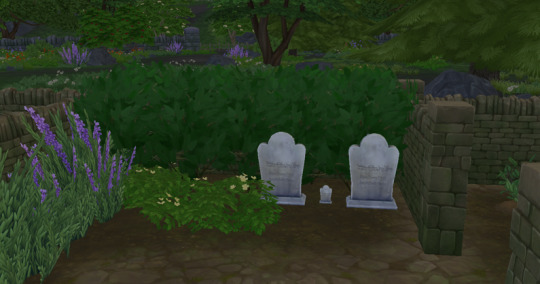
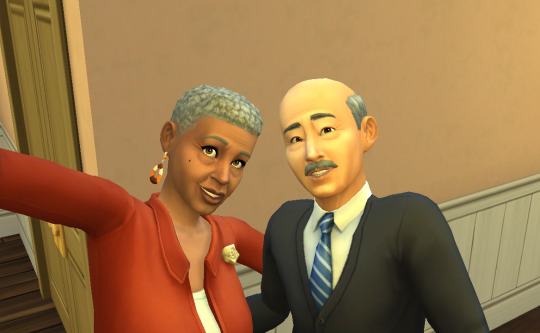

The town of Henford was rocked by a seniors’ river cruise disaster which killed Spencer’s grandparents Dennis and Vivian Lewis-Kim, as well as Ian and Derek Moody-McMillan, who were old friends of the Nesbitts and grandfathers to Nicola, Hazel’s bestie-turned-girlfriend.

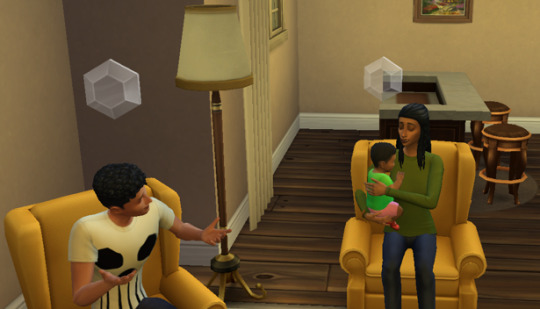
The disaster brought Everett and Spencer home to visit her family. The Nesbitts sent condolences, grateful to have been spared greater grief as the town’s fledgling riverboat tourism industry took a nosedive. Spencer met her new niece and infant Greyson got to know his aunts on the Pancakes and Kim-Lewis sides of his family.
The visit made them miss home, and they began to talk about coming home to Henford for good. For now, however, life called them back to Oasis Springs after the funerals.
Daisy was still a PlantSim, which was concerning as the effects of the forbidden fruit had worn off much slower than she expected, and River’s wedding was just around the corner. Despite this, Daisy stayed close to Heather until delivery.
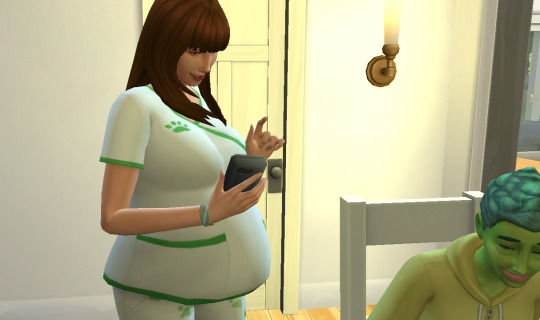
One evening, Heather tried to show her mother how to use accounting software for her floral business, but it wasn't going well and Heather was starting to get bored. She nonchalantly checked her phone. "You wrote a whole cookbook, Mom. You taught me how to do online research, but you can't figure out a few numbers?"
Daisy frowned. "I always let the telescope do my number-crunching for me. I really just loved gardening." She clicked something, and the program disappeared. "Oh, what now?"
"Let me." Heather leaned over her mother's shoulder. "You deleted it? How did you do that?"
Daisy shrugged in frustration. "I really don't know."
Heather opened her Recycle Bin to retrieve the deleted file when she noticed a strange folder. "VetConnect? Is this a clone? What?"
"What does that mean?"
"I...I think someone might have cloned my app files and given them to Petcare Inc."
"Who would do such a thing?"
"Other than you, no one's used my computer since...since Malcolm! I used to let him log in to send work emails. Oh my god! I could kill him!"
Daisy frowned. "Don't say that. Can you sue?"
"Against the Landgraabs? I don't even know if I could prove it was him," she said. "But I think I can fight fire with fire. My vet tech had the idea, and it took years to make the first one, but I'm going to have to work on a new app."
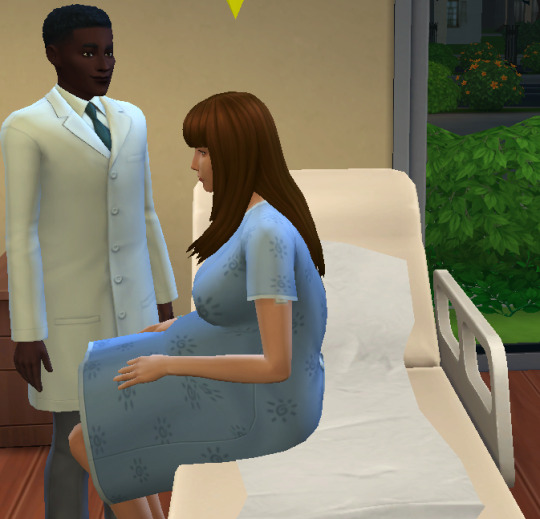
After a family dinner in Henford, Heather finally went into labour. Daisy went with her to the hospital, where her doctor was the on-call intern, Jamar Scott, her childhood neighbour.
(And the eldest son of Henford townies Simon and Sara Scott.)
"How's life in Brindleton Bay?"
"It's really great! I love being by the sea and I really feel like the clinic was my calling."
"I know what you mean. What you do for animals is what I love to do for sims."
"And how's Malia's freelance career?"
"She loves the flexibility, and I can't say I blame her. We're talking about starting a family of our own once my residency's done and I can work better hours."

Just before four in the morning, an exhausted Heather gave birth to a healthy baby boy she named Ash Neal Nesbitt. She debated the last name for months, but Malcolm hadn’t checked on her except when he needed a paternity test. And he stole her mobile app's code!
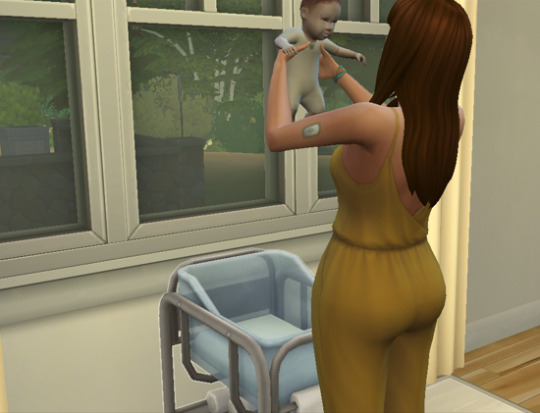
Since then he’d been no better than a ghost. If he wanted to miss out on his son's life, Heather was fine with it. ->
<- Previous Chapter | Gen 2 Start | Gen 1 Summary | Gen 1 Start
NOTE: To prevent them from randomly marrying other sims I made Dennis Kim and Vivian Lewis fall in love and marry years after their kids, Eric and Alice, married and started a family (they had three girls - Olivia, Spencer, and Lydia Kim-Lewis).
NOTE 2: I made OG grocer Kim Goldbloom the adopted daughter of Ian Moody and Derek McMillan because I wanted to make all the Henford NPCs playable at the start of the game. (I also paired up Michael Bell and Cecilia Kang despite their canon bad first date, married off Agnes and Agatha and moved them in with the Pancakes after making Agatha the mother of Bob, and put Lavina and Rahul in a home in the Bramblewood. She married Paolo Rocca and had two more kids, Rahul married Rashidah Watson after graduation and they moved to Brindleton Bay to start a family.
#sims 4#sims 4 gameplay#sims 4 screenshots#sims 4 legacy#sims in bloom#ts4#ts4 gameplay#ts4 legacy#ts4 screenshots#sims 4 story#ts4 story#legacy challenge#sims legacy#ts4 legacy challenge#gen 2#henford on bagley#brindleton bay#vivian lewis#imran watson#dennis kim#ian moody#derek mcmillan
30 notes
·
View notes
Text
Blog Post #4 - Due (2/27)
How do contemporary cyberspace studies ignore the issues regarding race?
In many contemporary cyberspace studies, researchers see the internet as a neutral tool that has transcended cultural and racial boundaries over time. However, this neutral regard for technology fails to acknowledge the inequities that exist in cyberspace, which are responsible for affecting those that are marginalized by institutional racism, power dynamics, and history.
What are some of the ways that invisible cyberspace identities can promote harmful stereotypes of race?
There are multitudes of ways in which individuals can engage in racism behind a screen. Racist practices such as blackface and yellow-face are utilized to assume the identity of a person of color and promote negative feelings to others under a disguise. “Ow’s essay describes the racial politics and modes of representation that are enacted in the everyday practice of contemporary video games in particular Ow analyzes the game Shadow Warrior and argues that the game forces the player to occupy a racist violent and colonist subject position” (Kolko et. al., 2013, p. 10). Many races are also subject to exoticization, fantasization, and misrepresentation. Some issues also include trolling and harassment in the form of doxing, bullying, and the use of slurs, stereotypes, and negative conversations that take place through screens.
How do cases such as the Yellow-faced cyborg relate to technological issues that perpetuate a malleable Asian identity?
The case of the yellow faced cyborg ties to the practice of “yellowface” which includes adopting or pushing exaggerated portrayals of stereotypes of East Asian individuals. In many cyberspaces (online spaces) racial identities are easily shaped or distorted (i.e. blackface). In many spaces, Asian identities are often appropriated or altered, similarly to Jeffrey A. Ow’s example of Lo Wang, a character who is not necessarily Chinese nor Japanese, but is a ninja that eats fortune cookies to regain health. Not only are these characterizations of Asian characters false/culturally incorrect, but they are normalized and often utilized for profit and gain. In the media, Asian women are seen as submissive and subservient, and are often hypersexualized. We see instances of hypersexualization of Asian women in cyberspaces of K-pop, gaming, music, anime, and more.
What are some ways that people can stay safe when using cyberspaces?
Although there is a slim chance we can guarantee our security and the security of others, we can safeguard our identities and technology through the use of strong passwords, using two-factor authentication, acknowledging and searching for scams, updating software apps, using vpns or antivirus programs (such as an ad blocker), and be very careful of the information we share online. During class on Wednesday (2/26), we discussed these techniques to safeguard ourselves and our loved ones, and we discussed the importance of being safe with technology.
References
Kolko, Beth, et al. Race in Cyberspace. Hoboken, Taylor and Francis, 2013.
7 notes
·
View notes
Text

New data model paves way for seamless collaboration among US and international astronomy institutions
Software engineers have been hard at work to establish a common language for a global conversation. The topic—revealing the mysteries of the universe. The U.S. National Science Foundation National Radio Astronomy Observatory (NSF NRAO) has been collaborating with U.S. and international astronomy institutions to establish a new open-source, standardized format for processing radio astronomical data, enabling interoperability between scientific institutions worldwide.
When telescopes are observing the universe, they collect vast amounts of data—for hours, months, even years at a time, depending on what they are studying. Combining data from different telescopes is especially useful to astronomers, to see different parts of the sky, or to observe the targets they are studying in more detail, or at different wavelengths. Each instrument has its own strengths, based on its location and capabilities.
"By setting this international standard, NRAO is taking a leadership role in ensuring that our global partners can efficiently utilize and share astronomical data," said Jan-Willem Steeb, the technical lead of the new data processing program at the NSF NRAO. "This foundational work is crucial as we prepare for the immense data volumes anticipated from projects like the Wideband Sensitivity Upgrade to the Atacama Large Millimeter/submillimeter Array and the Square Kilometer Array Observatory in Australia and South Africa."
By addressing these key aspects, the new data model establishes a foundation for seamless data sharing and processing across various radio telescope platforms, both current and future.
International astronomy institutions collaborating with the NSF NRAO on this process include the Square Kilometer Array Observatory (SKAO), the South African Radio Astronomy Observatory (SARAO), the European Southern Observatory (ESO), the National Astronomical Observatory of Japan (NAOJ), and Joint Institute for Very Long Baseline Interferometry European Research Infrastructure Consortium (JIVE).
The new data model was tested with example datasets from approximately 10 different instruments, including existing telescopes like the Australian Square Kilometer Array Pathfinder and simulated data from proposed future instruments like the NSF NRAO's Next Generation Very Large Array. This broader collaboration ensures the model meets diverse needs across the global astronomy community.
Extensive testing completed throughout this process ensures compatibility and functionality across a wide range of instruments. By addressing these aspects, the new data model establishes a more robust, flexible, and future-proof foundation for data sharing and processing in radio astronomy, significantly improving upon historical models.
"The new model is designed to address the limitations of aging models, in use for over 30 years, and created when computing capabilities were vastly different," adds Jeff Kern, who leads software development for the NSF NRAO.
"The new model updates the data architecture to align with current and future computing needs, and is built to handle the massive data volumes expected from next-generation instruments. It will be scalable, which ensures the model can cope with the exponential growth in data from future developments in radio telescopes."
As part of this initiative, the NSF NRAO plans to release additional materials, including guides for various instruments and example datasets from multiple international partners.
"The new data model is completely open-source and integrated into the Python ecosystem, making it easily accessible and usable by the broader scientific community," explains Steeb. "Our project promotes accessibility and ease of use, which we hope will encourage widespread adoption and ongoing development."
10 notes
·
View notes
Text
Worst Interview Ever
Pitched by tech companies as a cost-efficient means of automating a laborious screening process typically done by an HR representative or recruiter, this A.I. software has the capability to “interview” hundreds of candidates, whom it can then recommend for further interviews with actual human beings. But for those on the other side of these chats, the experience of auditioning for a computer can feel somewhat surreal—and leave a rather unpleasant impression of a potential employer.
. . .
The shift to A.I. among human resources sectors is real. Earlier this month, the CEO of IBM confirmed that the company had laid off “a couple hundred” HR workers and replaced them with A.I. agents. A recent survey of 500 HR professionals also found that almost three-quarters of them believe they’re adopting the technology more quickly than other departments. Despite this, HR remains among the fastest-growing sectors in the U.S., with the Bureau of Labor Statistics predicting an 8 percent growth by 2033. According to the HR Digestmagazine, although A.I. can be used in this field to automate “an unnecessary amount of manual work,” like payroll management and vacation requests, it can’t yet “oversee the human section” or company culture. Still, amid concerns that the technology may develop algorithmic biases in hiring, Peditto believes that recruiters should be worried. “Good recruiters are more than just box-checkers and 15-minute screeners,” he said. “But for the people who this is sort of all they do, that can be scary, especially those early in their careers.”
The recruiters that are using A.I. are, in one sense, leveling the playing field. After all, some applicants, like Mayfield Phillips, who’ve been interviewed by A.I. bots have themselves used A.I. to boost their chances of landing a job by receiving help in polishing their résumés or tailoring cover letters. (You can even use the tech to practice your answers in mock interviews—a feature highlighted by Google in a recent Super Bowl ad—or have it listen to your job interview in real time and secretly suggest responses.) But Phillips, a 55-year-old IT project manager in New York, said he still found his experience this week of being interviewed by an A.I. chatbot, one also made by Apriora, to be profoundly surreal. Although he knew in advance he’d be conversing with an A.I. program that would listen to his verbal answers and ask him questions via text, he still had to schedule a time to chat with “Alex” (whose avatar appeared as a white woman with brown hair), and a preplanned interview had to be postponed due to technical difficulties the A.I. was experiencing. Phillips said he was also particularly frustrated and unimpressed after the A.I. was unable to answer a question he posed about what success might look like in the position.
slate.com/life/2025/05/jobs-ai-job-hiring-character-interview.html
4 notes
·
View notes